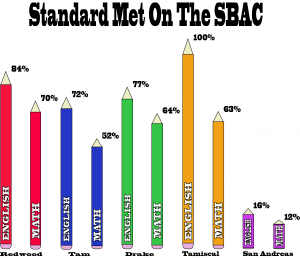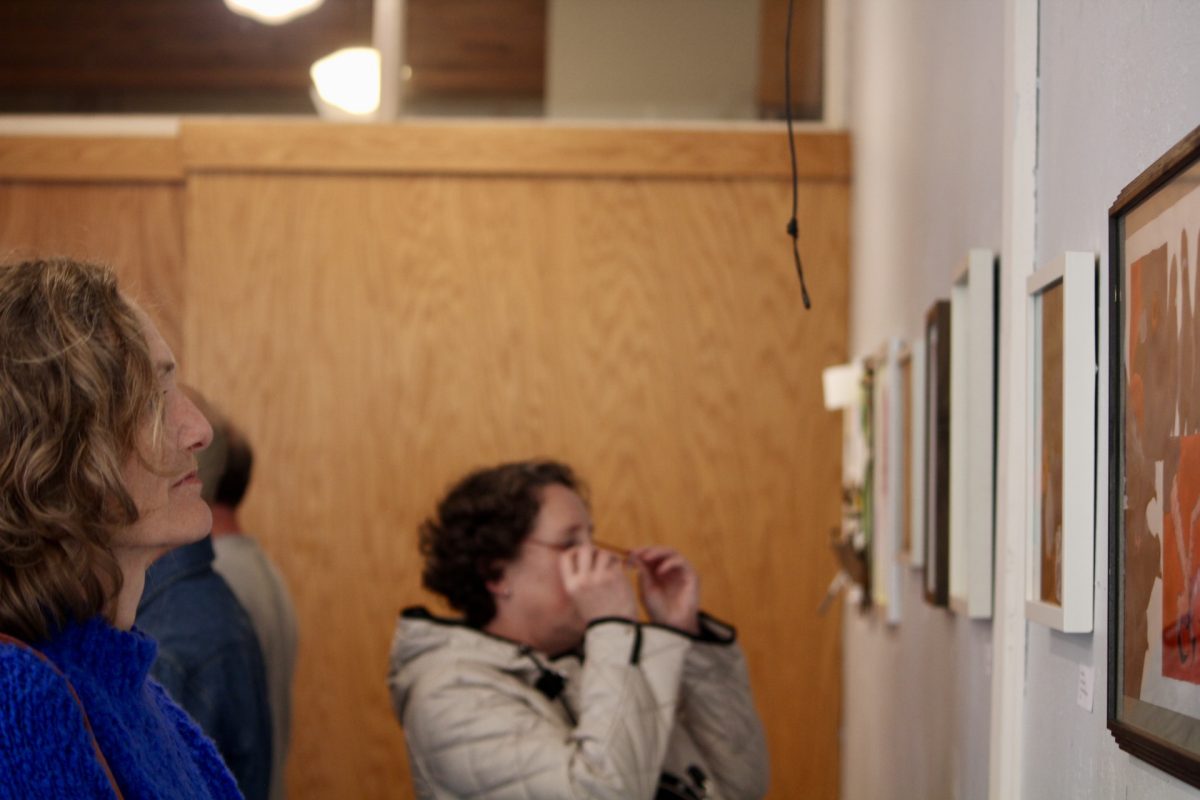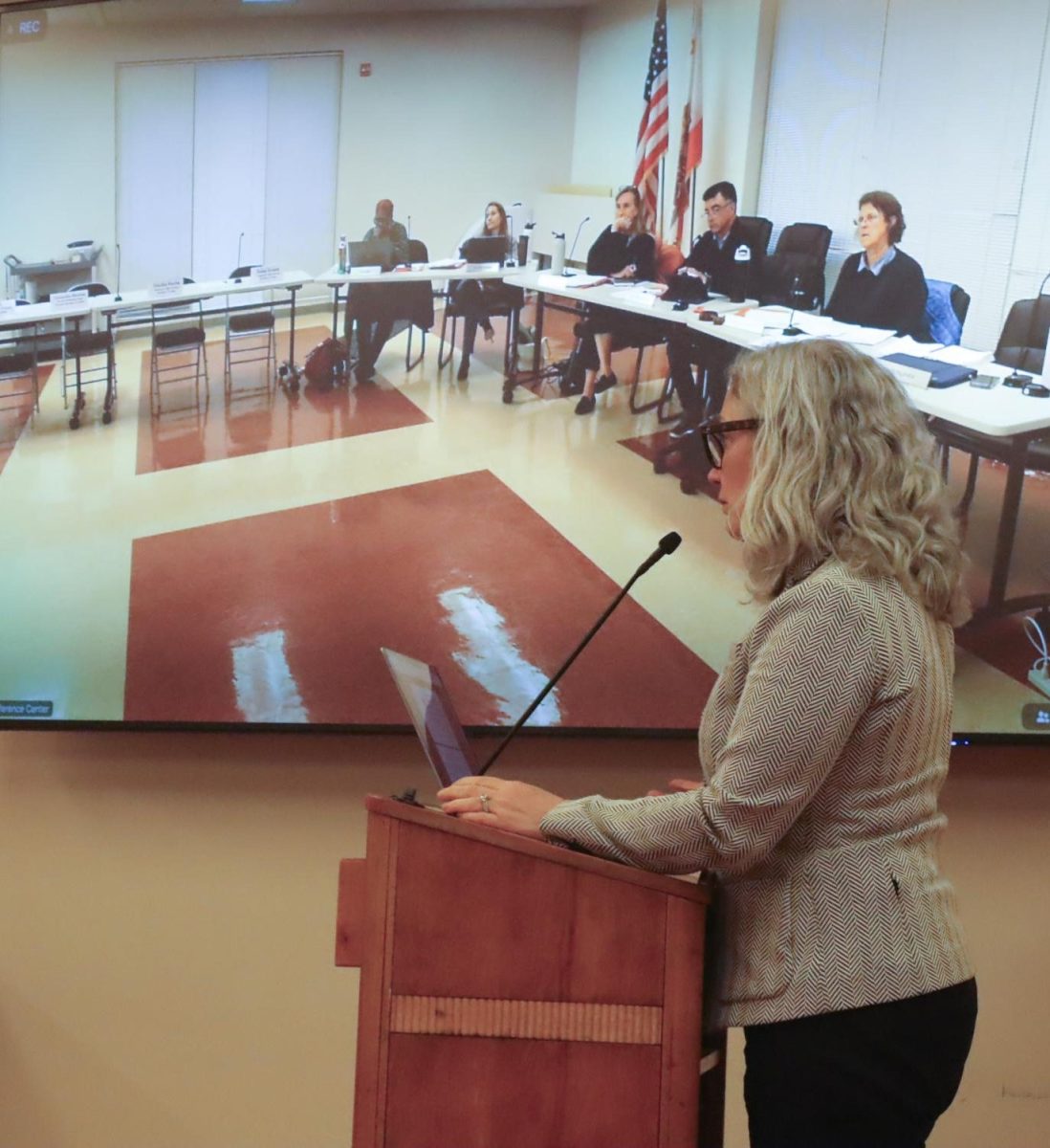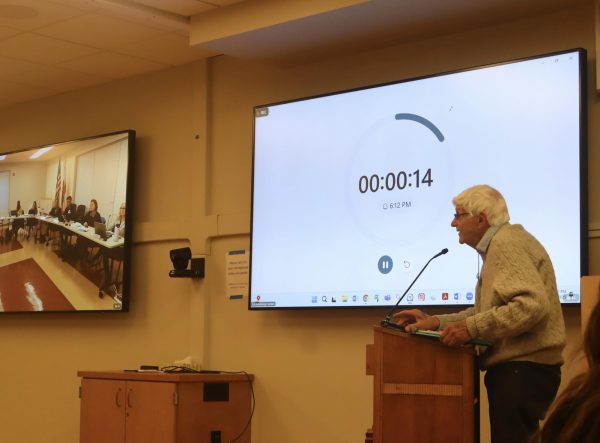Last year’s juniors from Redwood scored much higher on the 2014-2015 Smarter Balanced Assessment Consortium (SBAC) than juniors from the rest of the Tamalpais Union High School District (TUHSD) and Marin County, according to the California Department of Education.
The SBAC is a test designed to provide reliable and fair assessments aligned with the national Common Core Standards, and was given in place of the STAR test. The test consists of four parts––two English and two math––and is administered through the computer.
According to the California Department of Education, 84 percent of 11th graders at Redwood are proficient or advanced in English and 70 percent in math, compared to 69 percent and 48 percent of all Marin juniors, respectively.

Districtwide, the results were lower, with 78 percent of eleventh graders deemed proficient in English and 62 percent proficient in math. Across California as a whole, 56 percent of students were proficient in English and 29 percent were proficient in math.
The TUHSD ranked below Acalanes, Los Gatos-Saratoga, and Palo Alto districts, but ranked above the Mountain View-Los Altos school districts by percentage of students who were proficient in English. Additionally, the TUHSD was ranked below all the same school districts in percentage of students who were proficient in math.
Only 3 percent of 11th graders at Redwood failed to meet the core standards for English and 12 percent failed to meet the standards for math, compared to 15 percent for English and 30 percent for math for Marin.
In comparison, 8 percent of 11th graders in the TUHSD did not meet the core standards in English and 18 percent did not meet the standards in math.
One part of the math and one of the English is multiple choice. The test adapts the difficulty of multiple choice questions based on the number of questions a participant answers correctly.
For the other English and math parts, which are performance-based, students are given a 30-minute lesson and are required to use the different skills they learned in the lesson.
Assistant Superintendent of Education, Tara Taupier, noted that while many people think of the SBAC as a substitute for the STAR test, the tests are completely different.
“You can’t really compare the SBAC test to the STAR test because they are completely different tests; it’s like comparing apples to oranges,” said Assistant Principal Katy Foster.
Foster explained that usually when new standardized tests are administered, test scores go down briefly.
“Tests scores always experience an implementation dip, which is where tests scores go down as schools learn the new standards, but I don’t think we experienced one [with the SBAC],” Foster said.
According to Taupier, the new test was implemented so that there would once again be some common measure of achievement across the country that could be benchmarked.
“The standards for the STAR test were the state standards and the SBAC standards were more national common core standards,” Foster said.
“We are lucky we are in a district in which there are lots of computers and because we have so many resources, it didn’t take as long [to administer the online tests] as it would have without those resources,” Foster said.
Technology allowed the entire testing process to be smoother, according to Foster.






